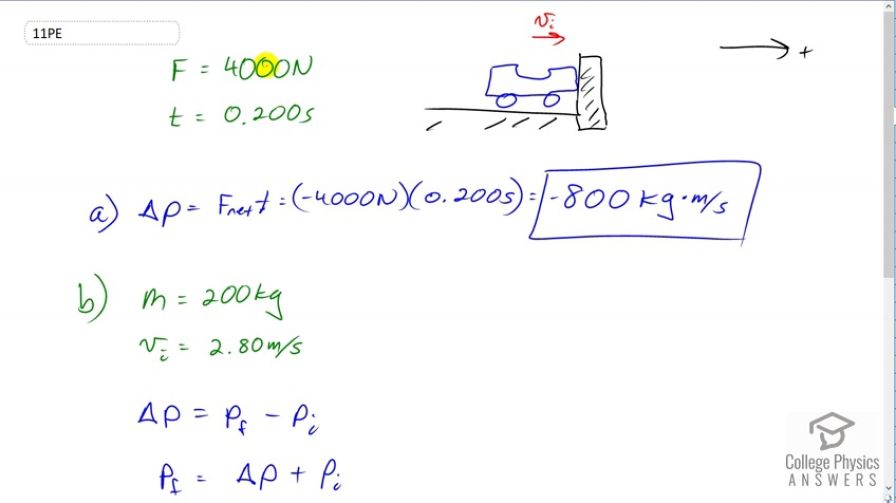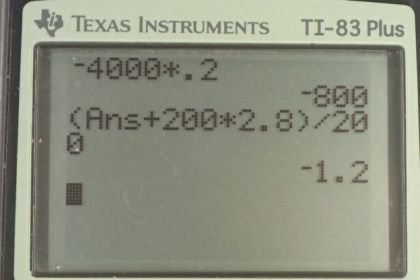Question
Suppose a child drives a bumper car head on into the side rail, which exerts a force of 4000 N on the car for 0.200 s. (a) What impulse is imparted by this force? (b) Find the final velocity of the bumper car if its initial velocity was 2.80 m/s and the car plus driver have a mass of 200 kg. You may neglect friction between the car and floor.
Final Answer
a)
b)
Solution video
OpenStax College Physics for AP® Courses, Chapter 8, Problem 11 (Problems & Exercises)

vote with a rating of
votes with an average rating of
.
Calculator Screenshots
Video Transcript
This is College Physics Answers with Shaun Dychko. This bumper car initially going in the positive direction say, hits the side rail and the side rail exerts a force of magnitude four thousand newtons on the car for a time of 0.2 seconds. Now the force exerted on the car is going to be in the opposite direction to the initial speed. So this is going to be a negative force. This force exerted by the side rail is the net force since there are no other horizontal forces to consider we're told that we can ignore friction. So change of momentum is going to be the net force multiplied by the time that it's acting. That's negative four thousand newtons times 0.2 seconds which is negative 800 kilogram meters per second, is the impulse. In part B we're asked to find out what is the final velocity of this car after the collision given that it has a mass of two hundred kilograms and an initial velocity of 2.8 meters per second which we'll take to be positive. So the impulse is the final momentum minus the initial momentum and we can solve for the final momentum by adding initial momentum to both sides. We're doing this calculation because the final momentum contains the velocity factor in it. So we can substitute m vF in place of PF and then divide both sides by m to solve for the final velocity of the bumper car. So its final velocity will be the impulse it experiences plus the initial momentum that it has, mass times initial velocity, divided by its mass. So that's negative 800 kilogram meters sper econd that we calculated in part A, plus two hundred kilograms times 2.8 meters per second initial velocity, all divided by 200 kilograms, giving a final velocity of negative 1.2 meters per second. The negative sign means that the bumper car is going to bounce off the side rail and go the other direction after the collision with a speed of 1.2 meters per second.
